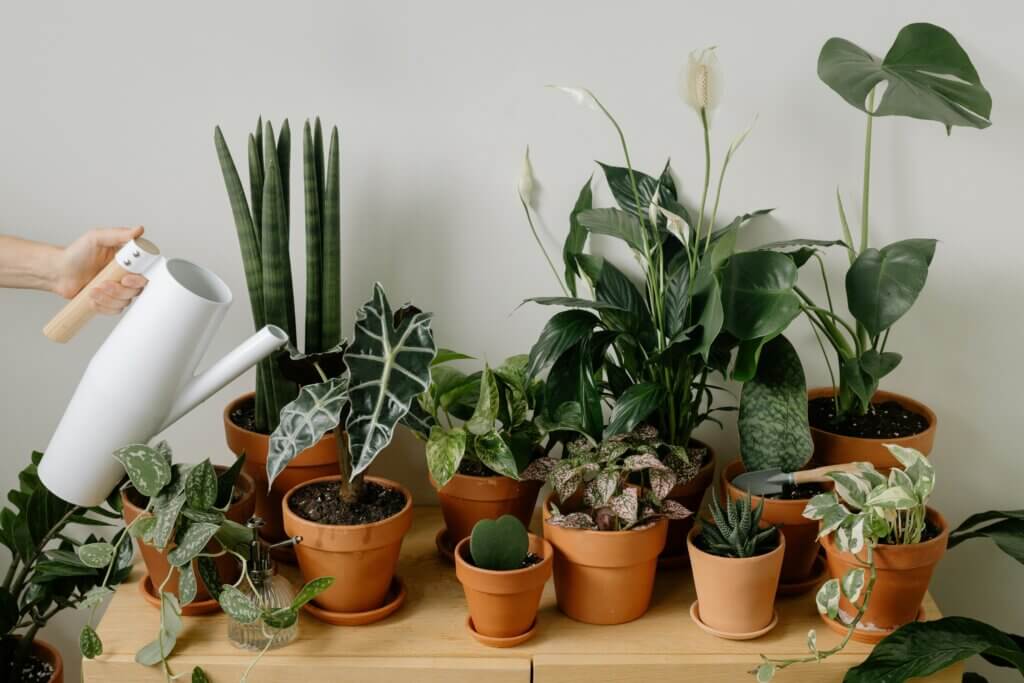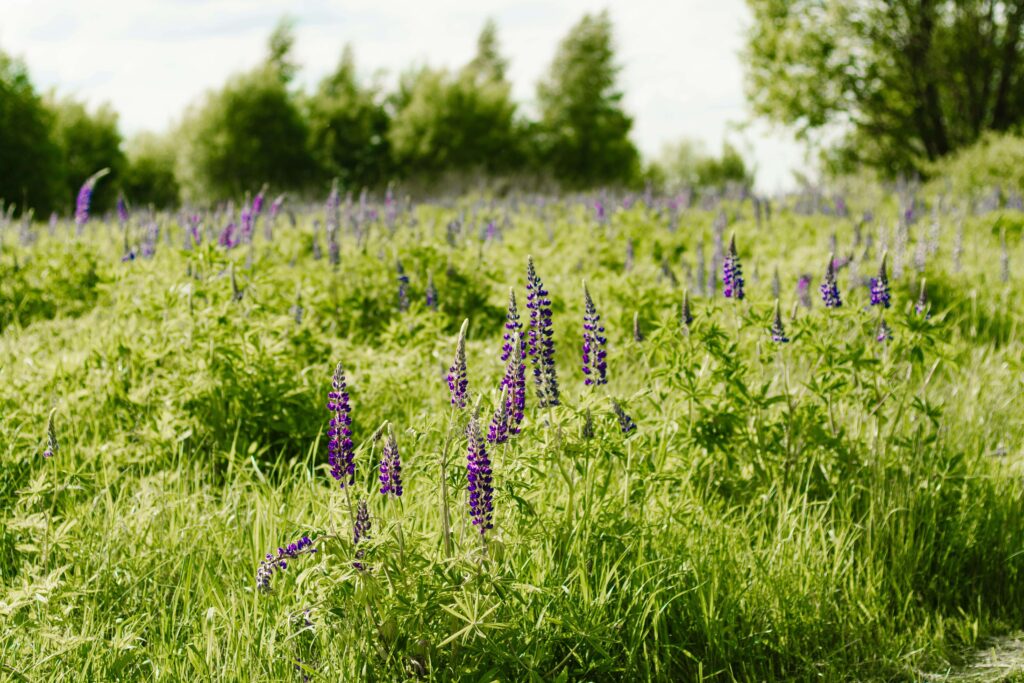Indoor plants not only add beauty to your space but can also help purify the air in your home. With modern lifestyles keeping us indoors more than ever, improving air quality is a major part of creating a healthier living environment.
Indoor air can accumulate various pollutants from common household items, cleaning products, furniture, and even our cooking. This buildup can lead to issues like headaches, eye irritation, and respiratory problems.
The good news is that certain houseplants can clear out pollutants and introduce oxygen, making the air in our homes cleaner to breathe. Here, we’ll cover 10 plants that clean the air and improve your indoor environment naturally.
Why indoor plants help purify air
The concept of plants as air purifiers was popularized by a NASA study that researched ways to clean the air in space stations, with certain plants proving to be particularly effective at absorbing air-borne toxins.
While houseplants alone can’t replace a high-quality air purifier, they can help reduce these airborne toxins and introduce more oxygen into your home.
What are these “airborne toxins” anyway and why are they a concern?
Toxins can enter our homes in different ways, and while they may not always be at toxic levels, even low-level, repeated exposure can impact air quality and, in some cases, health. Here are some common toxins and how they can make their way into indoor environments:
- Formaldehyde: Found in pressed-wood furniture, synthetic fabrics, paint, and adhesives. New items like carpets and cabinets may release formaldehyde through off-gassing.
- Xylene: Comes from paints, adhesives, and tobacco smoke. Also enters homes near heavy traffic or garages due to vehicle exhaust.
- Benzene: Present in some detergents, plastics, and tobacco smoke. Gasoline fumes also introduce benzene, so it can seep in from garages.
- Trichloroethylene (TCE): Found in paint removers, adhesives, and carpet cleaners. Storing or using these products indoors can raise levels.
- Ammonia: Common in cleaning products like glass and surface cleaners. Buildup is higher in poorly ventilated spaces.
- Airborne mold: Mold spores enter through open windows or cling to pets and clothing. They thrive in damp areas like bathrooms and basements.
Understanding how these toxins enter our homes is a helpful step in making simple adjustments that can reduce their presence, like choosing lower-emission products, improving ventilation, and reducing the use of certain chemicals in household cleaning. And of course, incorporating plants that can help clean the air.
Let’s take a look at 10 plant options for purifying your home’s air, each with unique benefits and ideal placement tips to help you make the most of their natural abilities.
10 Air-purifying plants to help reduce toxins in your home
1. Spider plant
The spider plant is a low-maintenance choice that’s effective at removing formaldehyde and xylene, common toxins found in household products. With its cascading leaves and adaptability, it’s an ideal plant for beginners.
As a bonus, spider plants readily produce “pups” or baby plants, which you can pot and propagate easily.
Placement: Spider plants thrive in indirect sunlight, making them ideal for living rooms and bedrooms where they can grow with little upkeep.
2. Snake plant
The snake plant, also known as “mother-in-law’s tongue,” is one of the best plants for air purification. It’s excellent at removing toxins like benzene, formaldehyde, and trichloroethylene. The snake plant also releases oxygen at night, which helps improve air quality while you sleep.
Placement: Snake plants are extremely hardy and tolerate low light, making them a great choice for bedrooms, bathrooms, or offices.
3. Peace lily
Peace lilies are known for their ability to filter out pollutants, including ammonia, benzene, and formaldehyde. They also help maintain humidity levels, which can be especially beneficial during dry winter months. Keep in mind, however, that peace lilies are toxic to pets if ingested.
Placement: Peace lilies prefer low to medium light and thrive in rooms with some humidity, like bathrooms or kitchens.
4. Boston fern
The Boston fern is known for its ability to remove formaldehyde, which is often found in products like paper towels, tissues, and certain cleaning products. Its feathery fronds also make it a beautiful addition to any room. However, it does need consistent moisture and a bit more care than some other plants on this list.
Placement: Boston ferns prefer cooler environments with high humidity, so they’re ideal for bathrooms or kitchens.
5. Aloe vera
In addition to being a popular plant for soothing skin issues, aloe vera is effective at purifying the air by absorbing benzene and formaldehyde. Aloe vera is also easy to care for, requiring only minimal water and bright, indirect sunlight.
Placement: Place aloe vera in the kitchen or near windows, where it can get enough light to thrive.
6. English ivy
English ivy is excellent for filtering airborne mold and formaldehyde, making it especially useful for allergy sufferers. It’s also a versatile plant that can be grown in pots, hanging baskets, or as a trailing plant.
Placement: English ivy does well in various lighting conditions but prefers moderate to bright indirect light, so it’s a flexible option for almost any room.
7. Rubber plant
Rubber plants are popular for their glossy leaves and ability to remove airborne toxins, especially formaldehyde. They’re also relatively easy to care for, thriving in moderate to bright light with regular watering.
Placement: Rubber plants do well in living rooms or offices where they can add a touch of greenery without needing constant attention.
8. Golden pothos
Golden pothos, or devil’s ivy, is known for its resilience and air-purifying capabilities. It’s one of the best plants for beginners and helps clear out pollutants like formaldehyde, benzene, and xylene. Its vines grow quickly, making it a great choice for hanging baskets or shelves.
Placement: Pothos is tolerant of low light, making it suitable for nearly any room, including bathrooms, bedrooms, and offices.
9. Bamboo palm
The bamboo palm is excellent for larger spaces as it can grow several feet tall, making it a statement plant as well as a natural air purifier. It’s particularly good at filtering formaldehyde and benzene while also releasing moisture into the air, which can help combat dryness.
Placement: Bamboo palms thrive in low to medium light, making them suitable for shaded areas in living rooms or entryways.
10. Philodendron
Philodendrons are versatile plants that are effective at removing formaldehyde. With heart-shaped leaves and low-maintenance requirements, they’re a beautiful and practical addition to any home. They come in both climbing and non-climbing varieties, so you can choose the style that best suits your space.
Placement: Philodendrons do well in indirect sunlight and adapt to various lighting conditions, making them great for living rooms, offices, or bedrooms.
Creating your ideal plant setup
While these plants are excellent at filtering air, the impact of a single plant on overall air quality can be minimal in larger spaces. For a noticeable difference, it’s often recommended to have multiple plants spread throughout your home.
Bill Wolverton, a former research scientist at NASA who conducted that 1989 plant study, suggests placing two large plants per 100 square feet of interior space for optimal air purification. This setup ensures each area benefits from the natural purifying effects, especially high-traffic rooms like the living room, kitchen, and bedroom.
Tips for maintaining healthy indoor plants
- Choose the right light: Each plant has different lighting needs, so make sure to research what’s best for each one. Place high-light plants near windows and low-light plants in dimmer areas.
- Water wisely: Over-watering is a common issue. Most indoor plants prefer slightly dry soil between waterings, so check the top inch of soil before adding more water.
- Add humidity: Many of these plants, like ferns and palms, thrive in higher humidity. To boost humidity, mist the leaves regularly or place a small humidifier nearby, especially in winter.
- Repot when needed: To keep plants healthy, repot every 1-2 years or when you notice roots crowding the pot. Fresh soil helps plants thrive and prevents root-bound issues.
- Avoid dust build-up: Dust can block light from reaching the leaves and reduce a plant’s effectiveness. Gently wipe the leaves with a damp cloth every few weeks to keep them clean.
Breathe easier with plants that clean the air
Adding air-purifying plants to your space can be an enjoyable and effective way to improve indoor air quality. While they might not replace the need for ventilation or air purifiers, these natural green purifiers contribute to low tox home atmosphere. Consider incorporating a few of these plants into different rooms, and enjoy the benefits.







